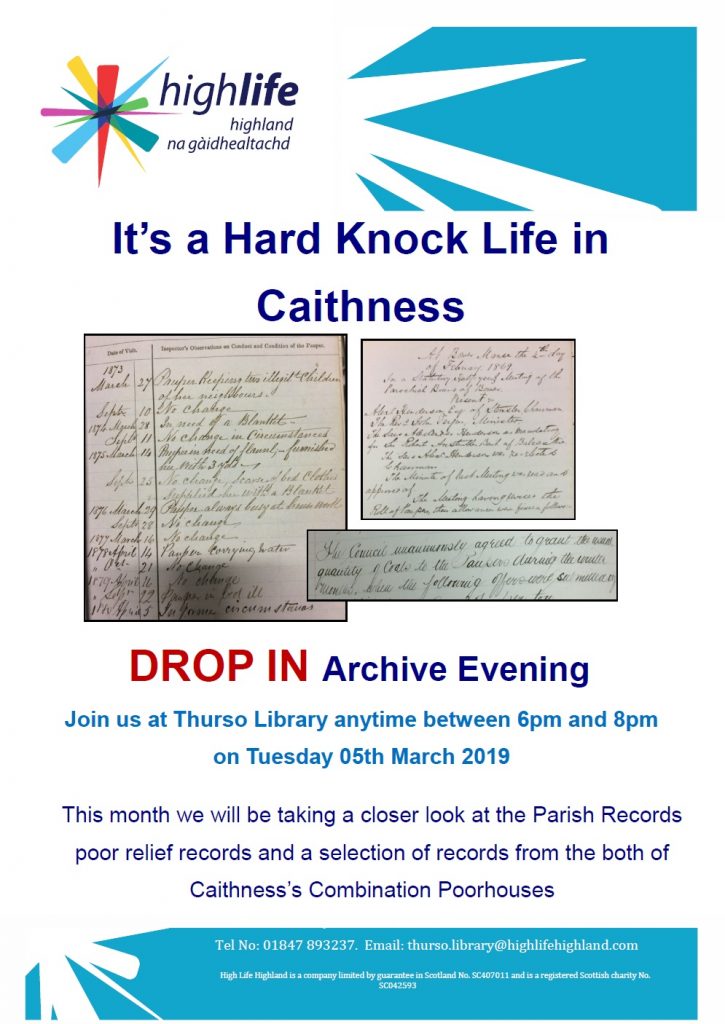
Join archive at Thurso library on
Tuesday 5th March 2019 between 6pm and 8pm
for the
History Club drop-in session
This month we will be taking a look at the Parish Records for the relief of the poor,
and a selection of records from both of Caithness’s Combination Poorhouses.
Poor Law
The Poor Law (Scotland) Act 1845 established parochial boards in rural parishes and in towns to administer poor relief (see CC/7). In 1894 they were abolished and replaced by wholly elected parish councils, but with their functions practically unchanged. Parish Councils were in turn abolished in 1930 under the Local Government (Scotland) Act 1929, and their functions transferred to county councils and large burghs, acting through Departments of Public Assistance (or Public Welfare). In 1948 the existing poor law was entirely abolished and almost all of it replaced by a national system, the forerunner of the modern ‘social security’ (National Insurance Act 1948).
Poorhouses
Although the 1845 Act allowed parishes to operate poorhouses, it did not require them to do so as was the case in England and Wales. Adjacent Scottish parishes could also join together to form “Combinations” and operate Combination poorhouses.
There were two in Caithness: the Latheron Combination Poorhouse, built c.1854 for the parishes of Latheron and Wick (see CC/7/5/9); and Thurso Combination, built c.1854-6 for the 8 parishes of Bower, Canisbay, Dunnet, Halkirk, Olrig, Reay, Thurso and Watten (see CC/7/8/9). In addition, a locally administered parochial poorhouse or almshouse was operated by the parish of Dunnet from at least the early 1870s.
Thurso Combination Poorhouse 1860-1925
CC/7/8/9
The Thurso Combination was formed in about 1853 and comprised the 8 parishes of Bower, Canisbay, Dunnet, Halkirk, Olrick [Olrig], Reay, Thurso and Watten. The Poorhouse was built in 1854-6 on a five-acre site at the west side of the Thurso Road to the north of Halkirk. The poorhouse closed in May 1917 with the majority of residents being transferred to the Latheron Town and Country Home. In 1924, the poorhouse building was sold, having stood empty for several years; it was eventually converted into housing.
